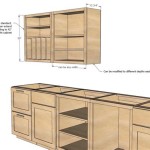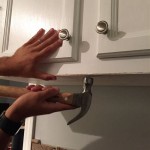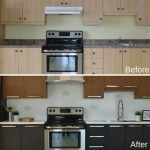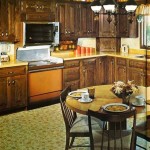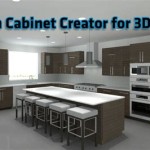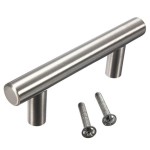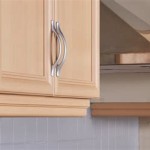Essential Aspects of Kitchen Cabinets: Upper and Lower
Kitchen cabinets play a crucial role in optimizing storage, functionality, and aesthetics in any kitchen space. They come in two primary types: upper and lower cabinets, each serving specific purposes and complementing each other to create a cohesive and practical design.
Upper Cabinets
Upper cabinets are typically mounted above the countertop, offering additional storage for items that are not frequently used or need to be kept out of reach of children. They can be classified into:
- Wall Cabinets: These are the most common upper cabinets, extending from the countertop to the ceiling or a designated height. They provide ample storage space and are ideal for storing dishes, glassware, dry goods, and cookware.
- Bridge Cabinets: Bridge cabinets span the gap between upper wall cabinets, offering additional storage or display space. They can be used to house specialty items like cookbooks, decorative pieces, or even a small TV.
- Hood Cabinets: These cabinets are designed to conceal the range hood and provide additional storage or display space above the cooking area.
Lower Cabinets
Lower cabinets form the base of the kitchen and provide accessibility to frequently used items. They typically rest on the floor and can be categorized as:
- Base Cabinets: These are the most common lower cabinets, providing ample storage for pots, pans, utensils, and other kitchen essentials. They can be fitted with drawers, shelves, or a combination of both.
- Corner Cabinets: Corner cabinets utilize the often-wasted space in kitchen corners, providing additional storage options. They come in various designs, such as lazy Susans, pull-out drawers, or L-shaped configurations.
- Sink Base Cabinets: These cabinets are designed to accommodate the kitchen sink, providing space for plumbing fixtures and storage for cleaning supplies.
Factors to Consider When Choosing Kitchen Cabinets
- Storage Needs: Determine the amount and types of storage you require based on the items you plan to store.
- Kitchen Layout: The layout of your kitchen will influence the size and shape of the cabinets you can accommodate.
- Style and Material: Choose cabinets that complement the overall design aesthetic of your kitchen. Consider the material and finish options to match your personal taste and budget.
- Functionality: Ensure that the cabinets you choose offer the functionality you need, such as easy accessibility, customizable storage solutions, and durable construction.
- Budget: Set a budget before you start shopping, as cabinet prices vary depending on size, material, and customization.
Maintaining Kitchen Cabinets
To preserve the longevity and appearance of your kitchen cabinets, follow these care tips:
- Clean regularly with mild soap and water.
- Wipe up spills immediately to prevent stains.
- Avoid using harsh cleaning agents or abrasive materials.
- Lubricate hinges and moving parts periodically.
- Call a professional cabinetmaker for any major repairs or modifications.
Selecting and maintaining the right kitchen cabinets can greatly enhance the functionality, storage capacity, and overall aesthetic of your cooking space. By considering the essential aspects discussed above, you can create a kitchen that meets your needs and brings joy to your everyday culinary adventures.

Ask Maria About Kitchen Cabinet Uppers And Lowers In Diffe Colours

Diffe Upper And Lower Kitchen Cabinets Design Ideas

Kitchen Cabinet Colors

Ask Maria About Kitchen Cabinet Uppers And Lowers In Diffe Colours

Blue And White Two Toned Kitchen Cabinets Bella Tucker

Upper Lower Versus Inner Outer Centsational Style

Diffe Upper And Lower Kitchen Cabinets Design Ideas

How High Upper Cabinets Should Be From Your Floor And Countertop
:strip_icc()/nakedkitchentwotone9-e7e2fe6937d447b2a885b7eb90698d69.jpeg?strip=all)
30 Stylish Two Toned Kitchen Ideas From An Expert

Upper Lower Versus Inner Outer Centsational Style
Related Posts

